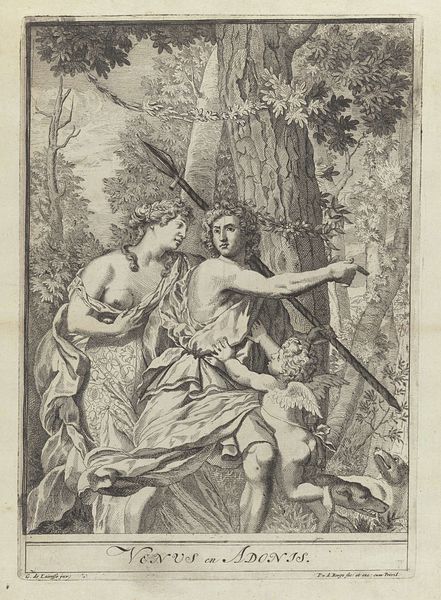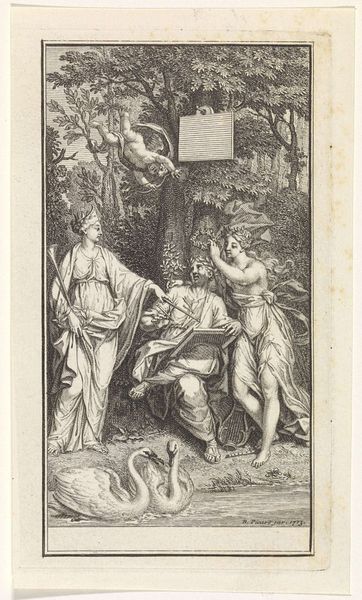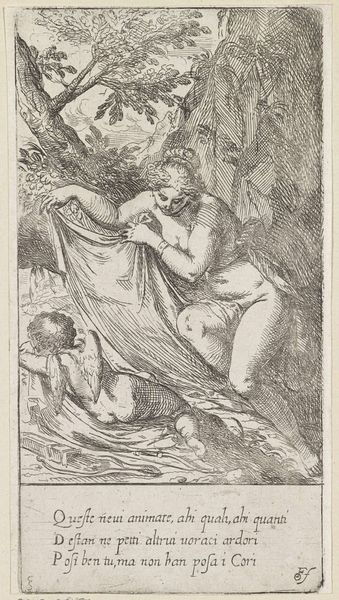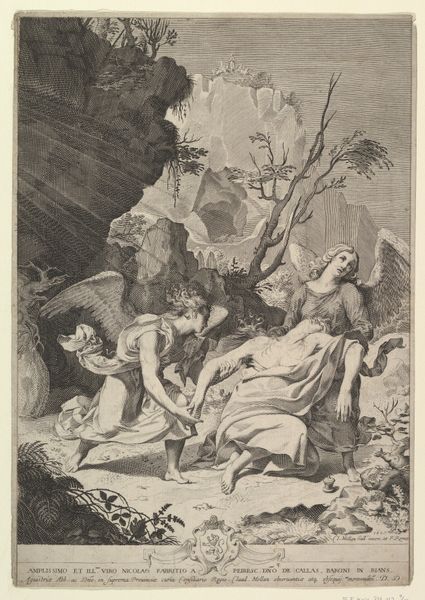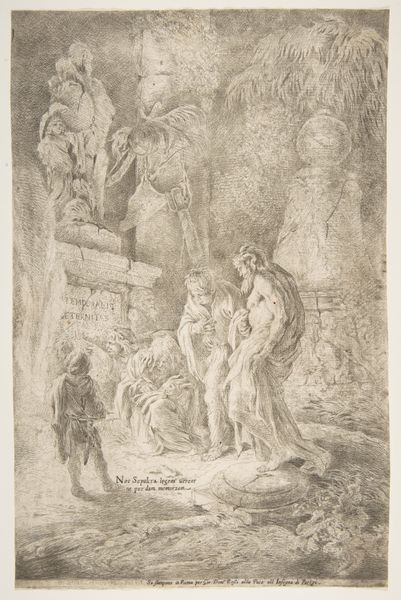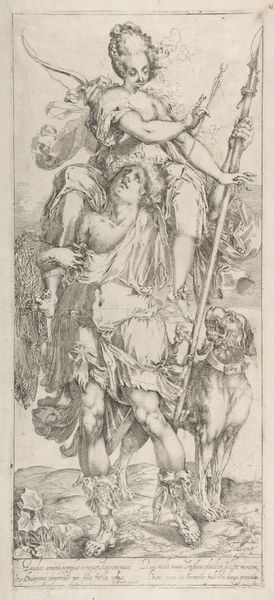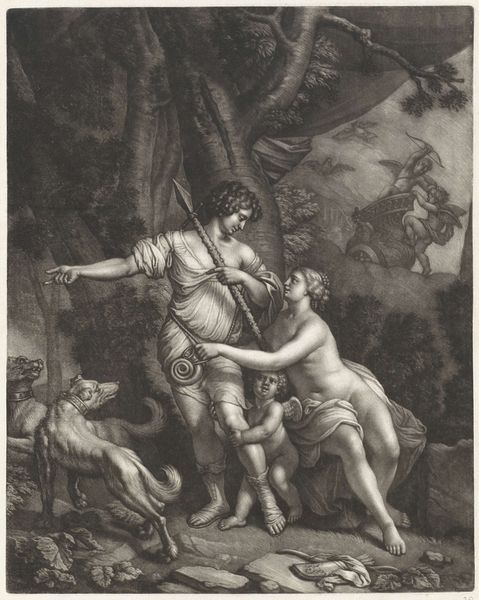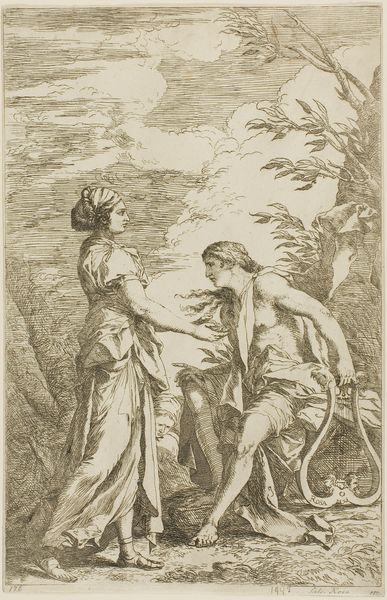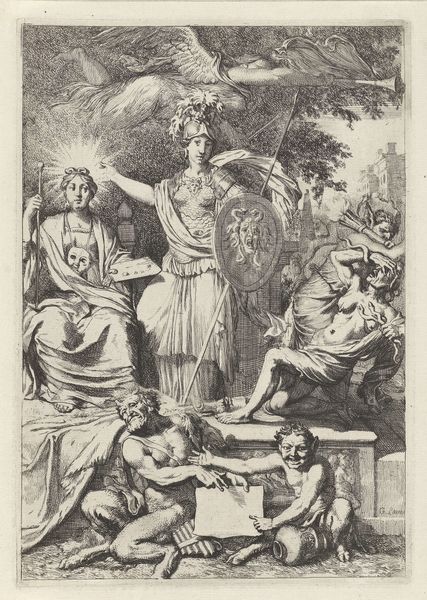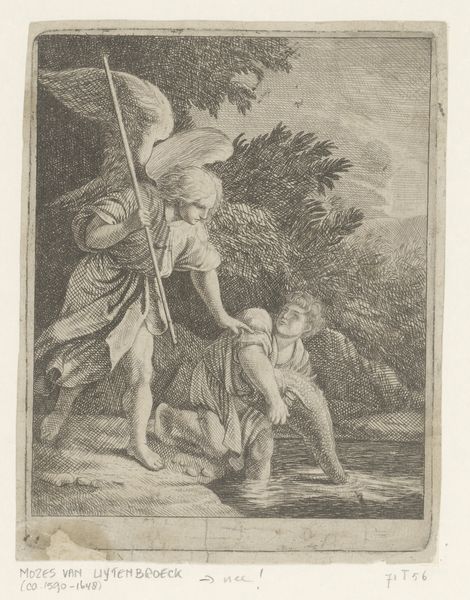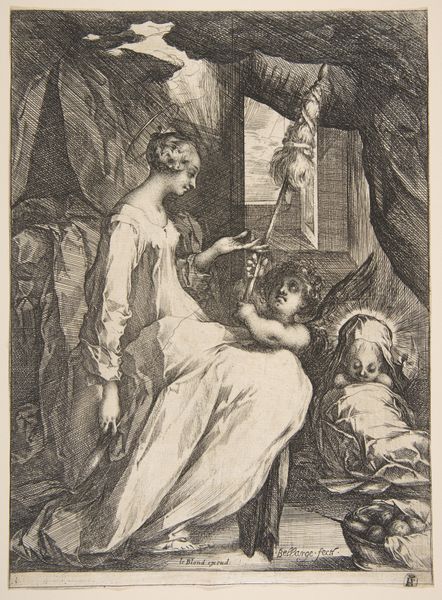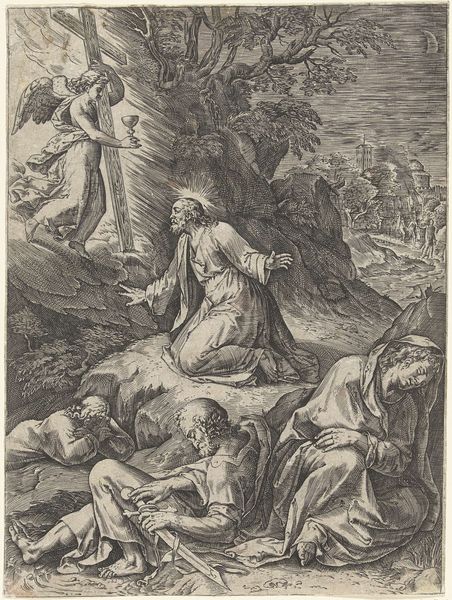
Dimensions: 240 × 171 mm (image); 271 × 194 mm (primary support); 432 × 296 mm (secondary support)
Copyright: Public Domain
Editor: Charles Rambert's "Plate Three from Misery," a lithograph from 1851, is starkly arresting. The somber figuration seems very characteristic of its romantic era and makes one ponder the heavy theme of social hardships at the time. What exactly should we be seeing or feeling? Curator: Ah, a truly haunting piece. I imagine Rambert, observing the human condition in 19th-century France, felt compelled to reveal the grit beneath the gilded surface, as Romantics often do. Look at how he uses shadow – it's not just background; it's almost a character, a suffocating presence that seems to envelop the figures, doesn't it? The etching breathes pain with life itself! I feel his personal indignation. Don't you? Editor: Yes, now that you mention it, I can certainly feel the desperation emanating. Curator: It's in the mother's gaze, the clinging child. Misery isn't merely depicted; it's almost a palpable force pushing and shaping these individuals. Rambert transforms societal woes into deeply personal grief. Did France not change much for this, I ask. But maybe art changes everything for someone? Editor: It's like each line etched onto the plate adds to the story. Thank you. I had looked at it as a piece but now it makes you imagine. Curator: Precisely! Isn’t it curious how a piece of paper and ink can transport us, remind us of shared human experiences and unspoken agonies? I look for his ghost's lesson now to make me brave enough! Editor: Exactly. I will feel this again! Thank you for your insightful observation.
Comments
No comments
Be the first to comment and join the conversation on the ultimate creative platform.
